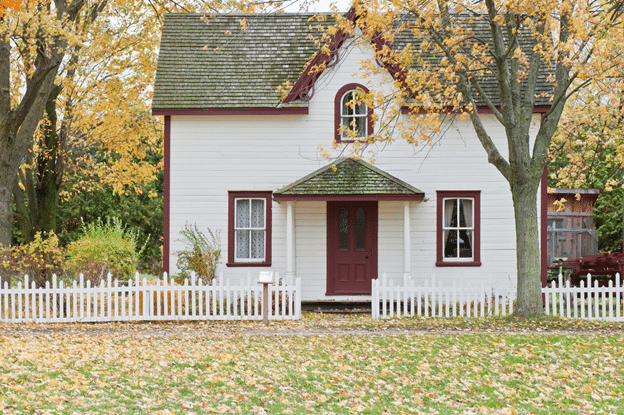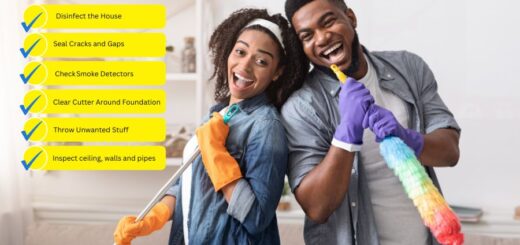5 Ways You May Be Hurting Your Property Value

When you purchase a home, it’s easy for your personal tastes to slow the process down. After all, you want your home to be a reflection of who you are. And since you’ll be the one spending so much time inside of it, why not cater it to your wants and needs?
While this philosophy makes sense while you’re actually living in your own home, there’s a stage in a homeowner’s timeline that deserves the same weight— the stage after you’ve decided to sell it.
Purchasing a home is an investment, and just like any investment, you want to turn a profit. Naturally, you’d want your home’s value to go up between the time you purchase and the time you sell.
There are many ways you can lower your property value, and not all of them are as obvious as painting your walls neon yellow.
Even aesthetic appearances and choices that seem harmless can have a detrimental effect on your home’s market value. Here are five big no-no’s for homeowners who want to see a net positive when they sell.
Not Repairing Smoke, Water or Mold Damage
As a homeowner, you can be forgiven for not wanting to shell out cash on repairs that don’t have a tangible effect on the way you live. Sure, that water damage might be a problem, but if it’s in your closet, nobody can see it, right? Why fix a leak if it’s in a room nobody uses?
Or maybe you had a bit of an accident with your outdoor gas fire pit over the summer, but don’t want to spend the money renovating your porch over some minor smoke damage? Or you might be thinking, why bother working on your storm-damaged garden if the new owners will plant their own?
This type of mindset can take its toll on your pockets when it’s time to sell your home. Most buyers will expect to make some repairs and renovations when they move in, but if they see that they will have to spend hundreds, even thousands, on repairs, they’re going to want to spend that much less on your home. On the other hand, if buyers don’t see anything they need to fix, they are more willing to include that money saved in their offering price.
Repairs aren’t just about aesthetics. Holding off on important improvements can make problems worse over time. For example, water damage can often turn into moldMold is a type of fungus that grows in damp or humid conditi... More which brings with it an array of respiratory issues. A clogged gutter will make it hard for water to leave your roof, opening the door to all types of leaks. It’s important to take care of any problems with your home before you put it for sale on the market. Consider working with a professional water damage restoration company if your home or business needs water damage repairRepair is the act of fixing or restoring damaged property, m... More and flood cleanup.
Choosing the Wrong Paint Color
Before you paint your interior your “favorite color”, make sure you’re thinking about how your paint choice will appeal to buyers. Obviously, there are some colors that are just polarizing. Neon pink? Makes people squint. Brown or yellow? Makes people think of certain bodily functions. Red? It’s a color that could grab too much attention. The color choice of your home should never compromise its atmosphere.
In fact, Zillow did a study on how certain color-room combinations took their toll on a home’s value. While some colors reflected positively on selling price, others were a recipe for disaster. The worst offenders? Red dining rooms, which brought value down by $2,031, and white bathrooms, which took a toll of a whopping $4,035!
Keeping Clutter
As life goes on, chances are you will collect a fair bit of, well, what you might call just… stuff. It’s likely that lots of this stuff will be of great sentimental value to you and you won’t mind having it scattered across your floor.
However, potential buyers won’t feel the same way. When they see a mess of personal items and knick-knacks, they’re seeing a home that looks trashier than it truly is. It can also make it harder for other people to imagine themselves living in it. When you sell your home, it’s important that you remove its personal flair and keep it neat. A disorganized interior will risk undermining the valuable qualities of your home.
Skipping the Yardwork
You might think that the interior is all people care about, but this couldn’t be further from the truth. People are very preoccupied with how their home appears from the outside, and the yard is the first thing buyers will see when they pull up to your home. A good first impression can go a long way, so it’s important to keep that yard as neat and beautiful as possible.
The yard is a testament to your “curb appeal”, which is how attractive your property is when you view it from the street. If it doesn’t look like you’ve put enough time and energy into the aesthetic of your yard, it will hurt your curb appeal and, in turn, hurt your property value.
On the other end of the spectrum, installing fountains and pools in your yard can also be a turnoff to buyers who might want to do their own landscaping once they move in. It’s important not to stamp your home with too much “you”, which leads us to our next point.
Having A Vanity Room
While you might think certain “perk rooms” like home theaters and recording studios will set your home apart from others on the market, they might actually be alienating to potential buyers. Just because you love movies, potential buyers might not share that passion. If you don’t like movies, you’d likely view a home theater as a glamorous waste of space, a big room that you’ll never use.
This doesn’t just apply to niche rooms; kitchens and bathrooms can fall victim to the “vanity” effect as well. While many people will respond well to a huge stove-top grill or a jacuzzi tub, many will just see it as pointless. Some might even take it as an indication that the home is not for them.
That being said, even if your home has fallen victim to any of these questionable decisions, it’s not too late. You can work backward and increase the value of your home right up until you finally sell it. Just make sure you avoid these mistakes.












